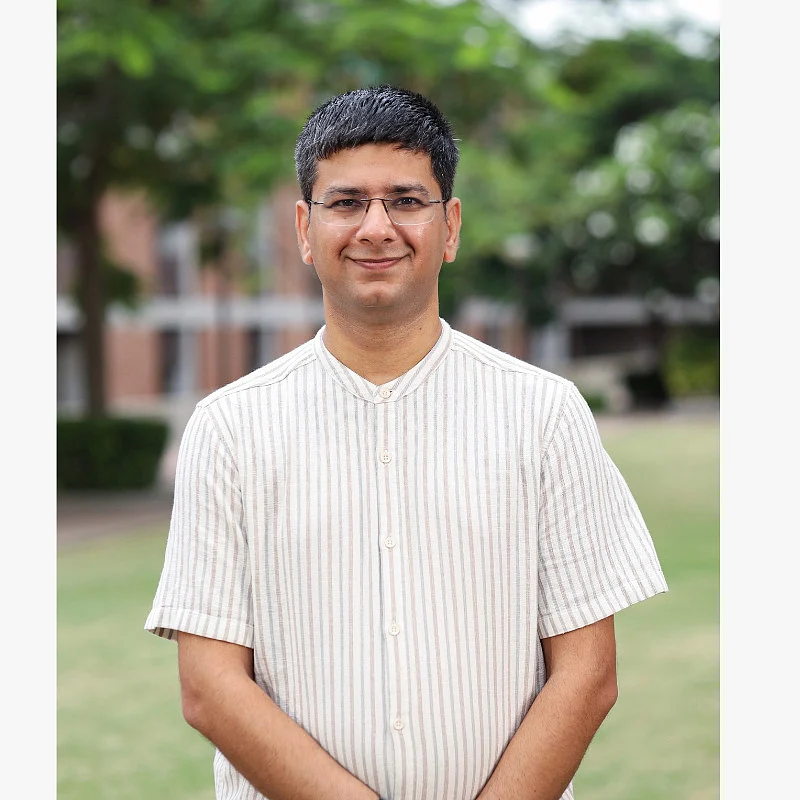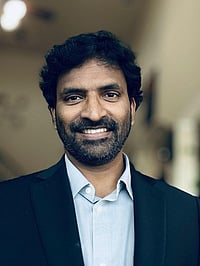Hello, everyone! I am incredibly excited to welcome you all to today’s forum. We have a special guest joining us - Dhruv Motwani, the head of AI at Avahi, someone who has made tremendous strides in the fields of Natural Language Processing, Machine Learning, and more recently, in the cutting-edge world of Generative AI.
Welcome Dhruv. Can you let us know a brief view of your journey till now?
Hi! It has been a pleasure being invited here on your forum and I really appreciate this invitation.
Well! Early in my career, I threw myself into the deep end of Natural Language Processing (NLP), playing around with language modelling and text analysis. I invested a few years into it building and solving for very crucial use-cases but then a few years later the world found itself at the cusp of this new technology called Generative AI. It was too hard to ignore so I started exploring that and the more I dived in the more I realised it was going to be the future. Fast forward to today, I find myself pushing foundational models to their limits. Apart from this, time and again, I also find myself contributing immensely to the open-source packages where any developer can whip up GenAI features with just a few lines of code. So, yeah, that's all.
You have accomplished quite a bit in the area of NLP and later in GenAI. How have you seen the evolution of NLP systems to GenAI later?
That's a Great question to be honest! Early on, NLP systems were more rigid, designed to follow specific rules to process and understand language. They worked well for straightforward tasks, like keyword searches or basic sentiment analysis. But as technology evolved, we began to see more advanced approaches that could grasp the context of language better, making NLP much more powerful.
The real game-changer came with models that could not only understand but also generate human-like text. This was the beginning of Generative AI. This shift opened up entirely new possibilities, from automating customer support conversations to generating content and even drafting reports. Now, It’s no longer just about analyzing language, but creating it, which has transformed how businesses can engage with customers and streamline internal operations.
From your perspective, what are the most exciting possibilities and the potential scale of impact it can have across industries?"
Generative AI has the potential to reshape entire industries, and we're just scratching the surface. Its ability to create human-like text, images, code, and even videos opens up possibilities for automating creative processes that were previously thought to be purely human-driven. For example, in industries like healthcare, GenAI can help draft clinical reports or even analyze vast amounts of medical literature to assist doctors with diagnosis. In customer service, it can create highly personalized responses at scale, significantly improving engagement. The potential to accelerate innovation and reduce the time it takes to bring products to market is huge. As models become more advanced, I see GenAI being deeply integrated into everything from marketing to R&D, making businesses more efficient and innovative.
That’s fascinating! You mentioned healthcare as one of the industries that could see a big impact. Could you dive a bit deeper into that? How do you see Generative AI specifically transforming healthcare in the next few years?"
I think healthcare stands to gain the most from Generative AI in the near future. The sheer volume of data that healthcare professionals deal with is overwhelming—medical records, research papers, diagnostic images, and patient histories. GenAI can assist by quickly reducing that data or condensing that data, helping doctors. They can make decisions faster. Also, GenAI can help with drug discovery by generating potential chemical compounds and predicting their efficacy. Beyond that, patient care could be improved through AI-driven interactions that personalize communication and follow-up care. The blend of human expertise and AI will revolutionize how the healthcare sector operates, leading to better patient outcomes and more efficient processes.
It sounds like Generative AI has enormous potential, but I'm curious—how difficult is it to learn and implement GenAI, especially for those who may not have a deep technical background? What challenges might someone face when getting started?
Initially learning Gen AI can feel really hard, especially if you’re new to AI or machine learning, but now it’s more accessible. There are so many open-source tools and pre-trained models available that you don’t need to start from scratch. Platforms like Hugging Face or OpenAI offer APIs that allow developers to get started without deep expertise. But, the challenge comes in understanding the underlying concepts—people find it hard to understand how transformers work, the importance of large datasets, and the fine-tuning process. If someone is starting out the most important thing is to get hands-on with small projects and gradually work his or her way up. It’s definitely learnable, but it requires a little patience and yes, curiosity definitely.
And speaking of GenAI’s capabilities, what other technologies or tools do you see working in tandem with GenAI to unlock even more potential? Are there specific combinations that you find particularly exciting?
Generative AI is incredibly powerful itself but I do think that combining it with other technologies is going to multiply its impact. One exciting combination is with edge computing, which allows AI models to run closer to where data is generated, making real-time applications possible—think about on-the-spot diagnostics in healthcare or personalized marketing at scale. Similarly the intersection of GenAI with AR/VR is also very exciting—imagine AI-generated virtual environments or personalized interactive experiences. These technologies together can unlock new ways for businesses to engage with their customers and streamline operations.
You mentioned contributing to open-source projects earlier. How important do you think open-source initiatives are to the future development of Generative AI?
Open-source is vital to the evolution of Generative AI. The reason AI has advanced so quickly is that much of the work has been shared openly, allowing developers and researchers to build on each other’s progress. By making tools, libraries, and models accessible, the community collectively accelerates innovation. It also democratizes AI, allowing developers from all over the world to contribute, experiment, and bring new ideas to the table.
I’ve personally worked on open-source scripts that help developers easily integrate GenAI features, and it’s fulfilling to see how they are used to create new applications. It’s how we ensure technology grows in a way that benefits everyone.
Thank you for sharing your insights with us today. It’s been a pleasure, and we’re excited to see how you continue pushing the boundaries in Generative AI
Thanks it was great to be here and thanks again for this invite


























